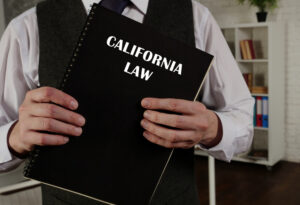Micheli Files
What is a mandated local program? Both the California Constitution and the California Government Code describe in detail a state-mandated local program. As a result of these laws, a California bill is identified as mandating or not mandating a local program that requires reimbursement of costs by the state.
Micheli Files
On occasion, a reader may find in a bill in the California Legislature that contains in the text of the measure a phrase similar to the following: “notwithstanding any other provision of law…”. What does this phrase mean? Why is it used? What is its purpose in a California bill?
Micheli Files
Defined terms can play an important role in any legislation. Defining words or phrases is done to provide the reader of the legislative or statutory text with clear guidance regarding how those words or phrases are to be interpreted and applied in the context of that specific text.
Micheli Files
Some Capitol observers have posed the question whether budget trailer bills in the California Legislature are “shielded” or protected from a referendum challenge. The answer to this question has not been addressed by the judicial branch, but we can certainly make an educated guess. Let’s consider a few points.
Micheli Files
Occasionally I have been asked whether the Legislature’s adopted rules – the Assembly Rules, Senate Rules, and Joint Rules – have equal standing as legislative process rules found in the California Constitution. This question is particularly relevant because these three sets of legislative rules flow from a specific grant of authority in the state Constitution.
Micheli Files
Pursuant to Article IV, Section 9 of the California Constitution, there is a requirement for each bill to have a title. The constitutional provision states: “A statute shall embrace but one subject, which shall be expressed in its title. If a statute embraces a subject not expressed in its title, only the part not expressed is void. A statute may not be amended by reference to its title.”
Micheli Files
We hear most often in the California Legislature that a rule is being “waived” or that someone is seeking a “rule waiver.” However, many rules may be “dispensed with” or “suspended,” rather than waived. So, what is the correct terminology to be used? Fortunately, or unfortunately, all of the above is the answer, depending on the specific rule.
Micheli Files
Those who listen to the Assembly or Senate Floors will often hear the “call of the house” being made and that “a quorum is established” or that the “quorum call is lifted.” What do these different phrases mean and why are they used?
Micheli Files
In the California Legislature, there are “special statute” bills that are used when legislators believe a bill’s provisions are unique and should apply in only a specified circumstance or to a specified entity or jurisdiction. Not any bill can be given a special statute designation.
Micheli Files
In the key case to discuss the use of legislative intent materials, we find clear guidance provided by the decision. The appellate court issued its written decision on August 30, 2005 and, since then, it has been cited affirmatively more than 80 times.










